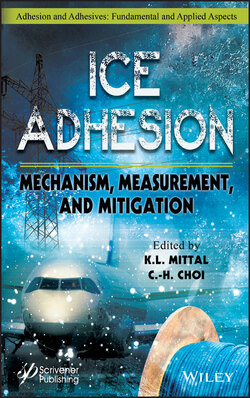Читать книгу Ice Adhesion - Группа авторов - Страница 28
1.5 Summary
ОглавлениеIn this chapter we have taken a journey through the history of ice on our planet, as well as early human’s symbiotic relationship with this seemingly inconsequential solid. In doing so, we see that rather than being incidental, ice has actually had a lasting effect on Earth’s lifeforms (and as a corollary, Earth’s lifeforms have had a lasting effect on ice). Our study of man’s relationship with surface icing has revealed that the conditions for the formation of ice were those that also led to the evolution of the human species. Further, history shows us that the scientific study of surface icing and the goal of engineering anti-icing surfaces is intimately linked to human modernity. In sum, the study of surface icing is perhaps, in a sense, the study of man’s role in the history of our planet.
This chapter’s review of the current state of scientific literature has aimed to offer the reader a method to rationally engineer surfaces which optimize: (1) the formation of ice; (2) the adhesion of ice; and/or (3) the sliding friction of ice. In Section 1.2, we used the thermodynamic classical nucleation theory to reveal a method to rationally design surfaces which inhibit the nucleation of ice. Following this, in Section 1.3, we discussed the pitfalls in the current trend of employing anti-wetting surfaces for anti-icing applications. By contrasting the ideal cases with reality, we arrive at the desired surface characteristics for the easy shedding of surface ice. Finally, in Section 1.4 we looked at the friction of solid surfaces sliding on ice from the point of view of the important liquid-like lubricating layer. In doing so, we have identified the important parameters which affect the thickness of ice’s liquid-like layer, and thus the force of friction.
We end this chapter by making one final important note. The diligent reader will have noticed that the conclusions of engineering surfaces in Sections 1.2, 1.3, and 1.4 are not mutually exclusive. It is not beyond reason to imagine a surface which can suppress the nucleation of ice via appropriate nanostructuring as well as easily shed ice via appropriate microstructuring.
